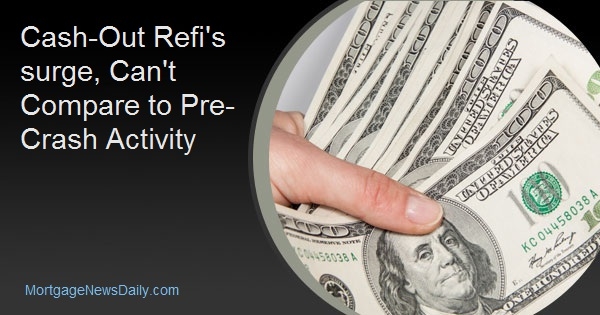The party is probably over for the time being when it comes to rate-and-term (i.e. "no cash out") refinancing. But even as rising interest rates steadily shrink the pool of candidates for that type of origination, other factors are encouraging refinancing of the cash-out variety. Freddie Mac says that 81 percent of all refinancing during the third quarter of this year involved a new mortgage that was at least 5 percent larger than the loan it replaced.
This is the highest share for cash-out refinancing since the third quarter of 2008 and up from a 62 percent share in the third quarter of last year. However, it is still below the 89 percent cash-out share of refinancing in the third quarter of 2006. The recent dollar volume is lower as well, in fact it pales in comparison to the cash-out refinance mania that preceded the housing crisis.
Expressed in 2017 dollars, the volume of equity taken out in the second quarter of 2006 was $102 billion. Volume in the third quarter was only about one seventh that level, an estimated $14.2 billion. It was also lower than the amount of home equity cashed out of conventional prime-credit mortgages in the third quarter last year, $18.3 billion.
If anyone is in doubt about the driving force behind the current crop of refinances, borrowers who refinanced their first lien mortgage in the subject quarter either kept the same interest rate or took a slightly higher one on average, compared with an interest rate drop of almost 0.7 percent rate a year earlier and much lower than the almost 1.9 percent reduction during the second quarter of 2013. Thus, Freddie Mac says, many of the refinances during the third quarter of 2018 appear to be primarily for the purpose of cashing out equity, possibly to consolidate higher interest debt, pay other bills or for home improvements. More than 95 percent of refinancing borrowers chose a fixed-rate loan, regardless of what the original loan product had been.







